Even if the quicker, perhaps almost more arcadey, look of RD4 wasn't to everybody's tastes, the additional smoothness and overall fluidity it provided over the third game was wholly beneficial. Reducing the framerate simply means that in one way this sequel has taken a step back. But on another level, it allows the developers to create a more cinematic presentation; one that is more akin to what you'd find on a Hollywood movie, than a live pay-per-view showing.
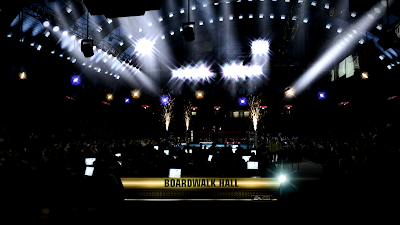
Fight Night Champion
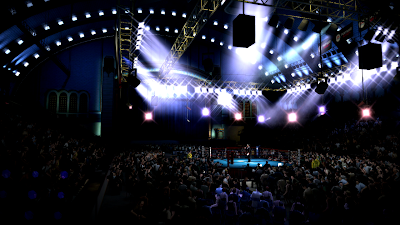
Fight Night Round 4
This change may initially seem strange - especially when considering the additional smoothness the higher framerate provided in RD4 - but with the difference in style that the developers are aiming for, on the whole it works rather well. Fight Night was, with RD4, buttery smooth, but with FN Champion, it is brutally fluid now, with each blow feeling like it carries a lot more weight than it did before.
Below, we've put together a video showing off a single gameplay section from both games back to back (on the 360), highlighting the difference. As expected, the video has been encoded at 60fps and in as high a quality as YouTube will allow for. Although, the site's own re-encoding has been far from kind, dropping the framerate back down to 30fps again.
From our comparison vid, you can see that the chop down to 30fps have made for some obvious upgrades in many areas. With more GPU cycles to spare on visual effects and more in the way of detail, the trade-off makes sense in the context of achieving the look the developers are going for.
The first thing to note, is that while the cut-scenes also run at 60fps and 30fps respectively, in both Fight Night titles. The real difference though, comes in the form of gameplay, whereby the change in framerate gives both games a completely separate feel to them - FN Champion is a lot more like RD3 in this regard, than it is RD4.
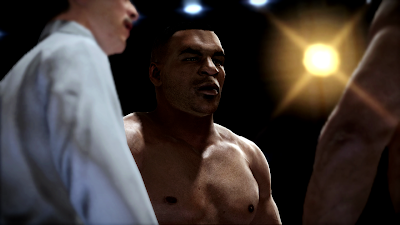
Fight Night Champion
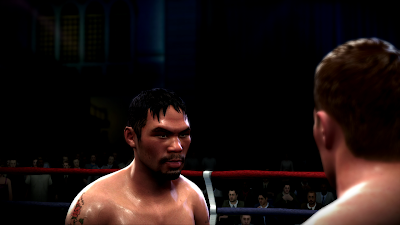
Fight Night Round 4
As you can see, the characters in FN Champion feature more detailed texturework, thus taking advantage of the lower bandwidth 30fps requires. Various elements, such as pores and lines visible on characters skin, are far more apparent. These intricate, little markings add a great deal of definition compared to the flatter look found in RD4. We can also a clear upgrade in terms of skin/surface shaders, which look stunning as a result.
Other improvements include a further advancement of the body-deformation system the team pioneered in Fight Night RD3, and tweaked/redone animations. Performing a left or right hook, for example, yields a much more realistic reaction when the arm collides around the opponents body when the two are standing together.
Below, we can also see the inclusion of a stronger depth-of-field effect in some scenes (its hardly there at all in RD4), along with an improved lighting engine, with what looks like use of more dynamic lights on screen. Here we see a few key lights illuminating the scene in real-time, along with more ambient lighting. This is especially apparent on the characters as they make their entrances to the ring. They are also more realistically shaded too.
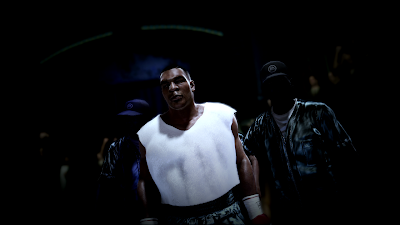
Fight Night Champion
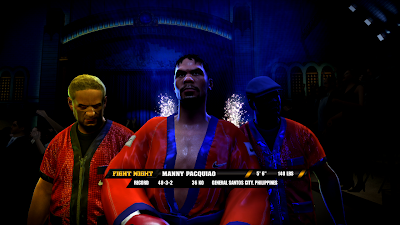
Fight Night Round 4
So, the drop to 30fps has been leveraged to allow for a greater number of advanced effects. And, by running at a lower framerate, effectively, the developers have more time to spend on rendering each frame. At 60fps you have roughly 16ms allotted per-frame, but when chopping the refresh number down to half , you now have a 33ms window in which to render the next frame. More time per-frame, means that it is possible to use more GPU intensive effects and not go over budget.
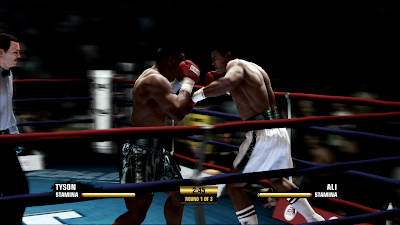
Fight Night Champion
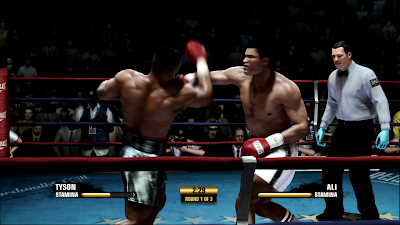
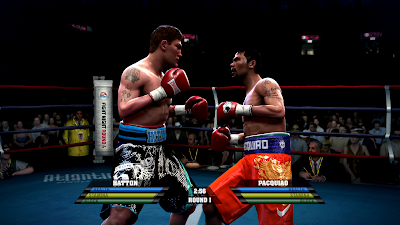
Fight Night Round 4
Standing out in terms of these newly added effects, is the use of an advanced implementation of per-object motion blur. Compared to blur as a post-process effect, having it on individual objects - calculated in real-time - in a scene is computationally expensive. Tekken 6 for example, had its framebuffer resolution downgraded in order to accommodate this, but here, with more budget per-frame to play with, EA have managed to get Champion running in 720p and, with 4xMSAA.
The use of blur also mitigates the drop down to 30fps somewhat. Motion looks and feels smoother than it really is - not to mention blindingly fast as you pull back and unleash those punches. In this case, the lack of raw smoothness is made up for with an increased sense of immersion. Plus, the grimier, more realistic art style in the game complements the change. On the whole its very impressive, and the change to 30fps has definitely resulted in a better looking game.
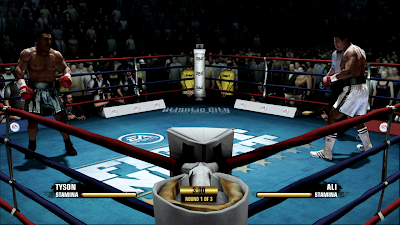
Fight Night Champion
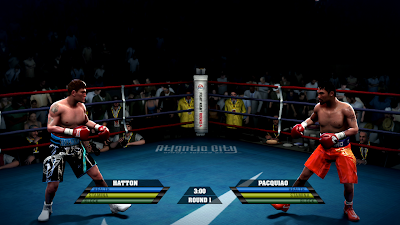
Fight Night Round 4
Of course, the purpose of today's update today wasn't to delve deep into the tech powering the game, but rather, to showcase how the drop to 30fps can actually provide some tangible benefits to the engine as a whole, even if the overall experience isn't quite as fluid . While 60fps may be the holy grail of refresh rates, it is not, by far essential in producing a visually outstanding game - Uncharted 2 for example, is still easily up there at the top - and EA's decision to go back to 30fps represents an understandable balancing of workloads; one which best suits the end production.
In FN Champion, it actually feels far more like you are actually battling it out with your opponent, like you are being thrust into the in an intense situation. Perhaps not quite lifelike, but exciting all the same. RD4 in comparison, feels more relaxed to play. Which goes to show, just how visual representation can often dramatically change things outside of the graphical scale, bolstering the gameplay as an intentional side-effect.
All shots from, and analysis based on the 360 version of the demo.

It's not actually like that (even if it's great that you did this analisys), we did no go 30fps as a "step back" to have more gpu cycles, we did blind gameplay tests of 60fps vs 30fps w/motionblur and people enjoyed the latter most as it gave a smooth more cinematic and powerful feeling. The lighhting itself was designed to be able to go 60 if needed.
ReplyDelete